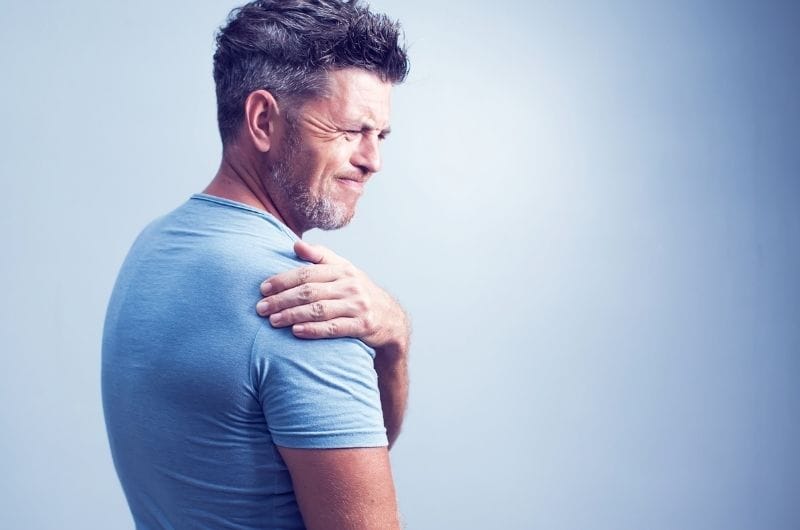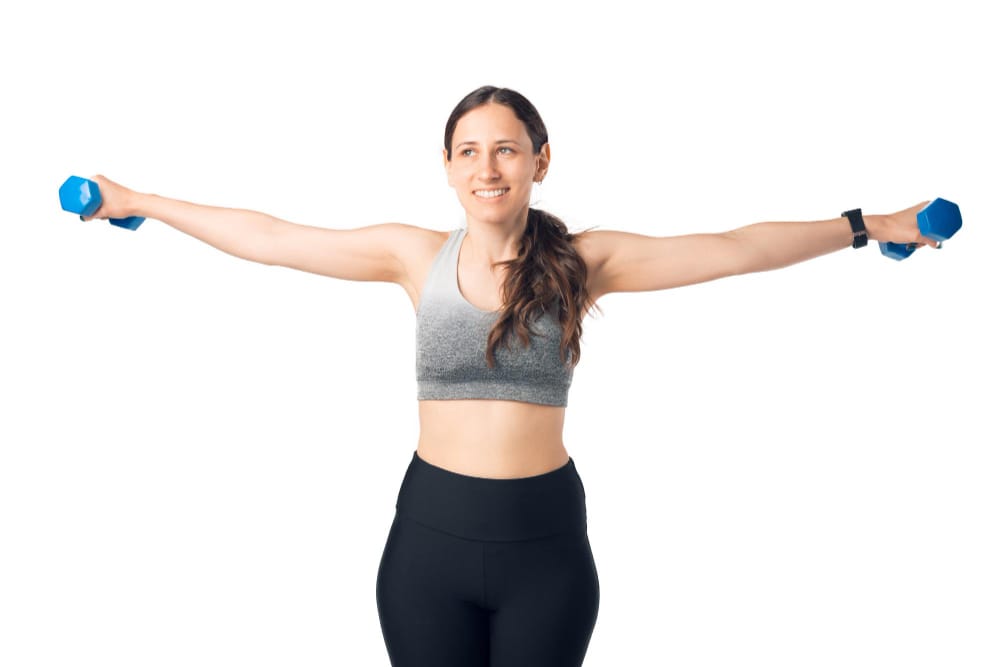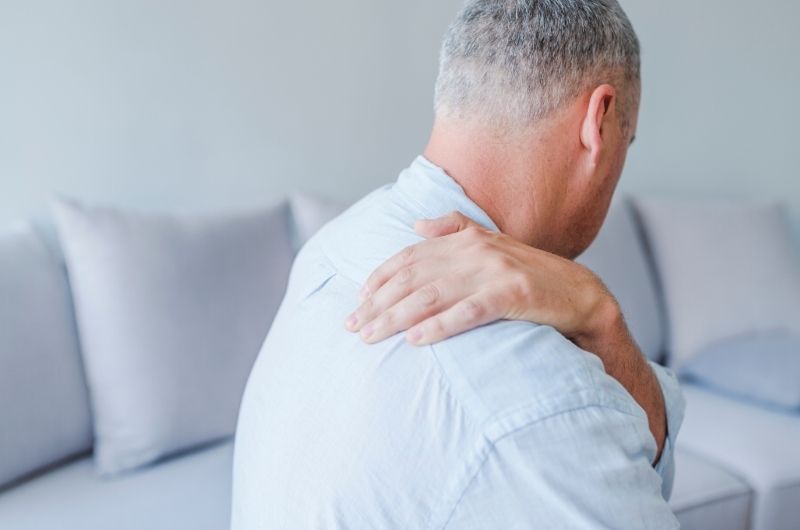After receiving surgery for a torn labral injury, you might take weeks and even a couple of months to regain your original movement and strength in the shoulder muscles. This recovery time is sensitive and vital for your shoulder. Even the slightest accidents can cause shoulder pain and make you think you have torn the labrum again. It’s rare to get it torn again, so it’s probably the sensitivity causing pain and so much concern. Continue doing your physical therapy to help strengthen your muscles. If you still suspect your labrum has re-torn, think back on the signs that were present in the first place when it was torn. See your doctor and clear any doubts.
The recovery time after a shoulder labrum tear surgery is crucial for the patients, and they need to take proper care by taking therapy and medications on time.
During this stage, your shoulder is sensitive, and even the lightest of pull can hamper the ongoing recovery.
Facing any second injury during this recovery phase is bound to make you nervous and wonder if it’s re-torn.
Let’s see what the chances are for you to re-torn your labrum and what you can do about it.
Recovery of torn labrum after surgery
A labral tear could be of different types, such as bankart lesions or tears, superior labrum, anterior to posterior (SLAP) tears or lesions, or posterior shoulder instability.
For you to have had a torn labrum, it could have happened because you overused it from a repetitive motion or faced trauma to the shoulder.
After the labral tear surgery, it becomes vital to take proper shoulder care.
Depending on the treatment you received on your torn labrum, the recovery period could be smaller or longer, and it also depends on whether you received surgery or not.
You must have received arthroscopic surgery, also known as keyhole surgery.
The recovery period depends on a lot of factors and varies for patients:
- Location of the tear
- The severity of the tear
- If surgery is necessary
- Surgery is keyhole or open
Of course, it takes several weeks to recover from the surgical repair and the initial few days are critical as the incision needs to heal.
Your doctor must have advised you to wear a sling on the shoulder to help the labral repair for 4 weeks after the surgery to limit any range of motion.
A SLAP can take between 6 weeks and 2 months to heal.
The patient receives treatments, such as medications, physical therapy, or cortisone injections.
In the case of using arthroscopic techniques to perform a surgery, a person might recover quickly and experience lesser pain than those who need open surgery.
During the surgery, the surgeon removes the damaged part of the labrum.
This can include cutting off any flaps of damaged cartilage that prevent proper movement of the joint.
Overall, there shouldn’t be any sudden movements, and one needs to avoid using their shoulder as much as possible and take a break from strenuous activities and sports until it has healed properly.
Possibility of the re-torn labrum

Taking care of your shoulder is a must for labral repair.
But sometimes, you can do all the right things and still accidentally hurt your shoulder, which received the surgical repairs.
It’s only right to be scared in such situations, for you don’t want to end up receiving another shoulder surgery.
It’s actually quite rare for someone recovering from a torn labrum surgery to end up tearing it again. You might feel a sharp pain, but it’s just that.
Once you’ve undergone shoulder surgery, it’s not that easy to get it torn again.
Your labrum might be torn again only in some instances, such as:
- A hard pull on the arm
- Falling onto an outstretched arm
- A direct hit to the shoulder
- A violent blow while reaching overhead
You might have fallen down on the ice or hit your shoulder against the cabinet door and become worried if you re-torn it, but not unless you went through anything mentioned above.
If you still aren’t convinced, then go back to when you had your labrum torn in the first place. The signs you experienced before then will be repeated if it’s re-torn.
This includes:
- A popping sound or feeling when moving the shoulder
- A grinding sensation when moving the shoulder
- The sensation that the shoulder is catching
- The shoulder locking
- Decreased range of motion’ a feeling of instability of the shoulder
- Loss of strength in the shoulder
If you aren’t experiencing any of the symptoms mentioned above, you can take a breath of relief as it isn’t re-torn.
Your shoulder is still sensitive, so if you experienced a sharp pain, it’s because it hasn’t healed properly yet and needs more time.
Exercises for a torn labrum

After receiving the surgery, you will be introduced to physical therapy and follow some exercises and stretches to strengthen your shoulder back to its original movement.
The sling is worn to get rotator cuff repair makes the shoulder stiff.
They’re about seven of these exercises which will help you strengthen your shoulder and ease you into shoulder movement:
Wall stretches
- Stand facing a wall about six inches away.
- Lean forward with your hands above your head and rest your arms against the wall.
- Gently lean your body forward, crawl your hands up the wall and hold for 20 seconds.
- Perform this set three times for better results.
Lateral raises
- Stand with your arms at your side.
- If possible, use a lightweight (1 to 5 pounds), extend your arms up and away from your body to shoulder height, hold for five seconds, then release.
- Perform this set three times of 10-12 repetitions.
Lying down shoulder flex
- Lie on your side with the shoulder that needs strengthening toward the ceiling-with your hips and knees slightly bent.
- Using lightweight (1 to 5 pounds), extend your arm straight and parallel with your body, and raise it toward the ceiling.
- Raise your arm toward the ceiling, hold at a 45-degree angle for 5 seconds, and then release.
- Perform three sets of 10 to 12 repetitions.
External rotation diagonal up
- Anchor a resistance band at knee level to a sturdy pole.
- Stand to the side with your hurt shoulder opposite the side where the band is anchored.
- Reach across the front of your body and pull the band up and above your shoulder, hold for five seconds, then release back down.
- Perform three sets of 10 to 12 repetitions.
External rotation 90 degrees
- Anchor a resistance band at shoulder level to a sturdy pole.
- Stand in front of where the band is anchored.
- Pull the band up and over your shoulder, extending it forward away from your body, and hold for five seconds, then release.
- Do this in three sets of 10 to 12 repetitions.
Crossbody stretch
- Begin lying down on your side of the hurt shoulder on the ground with your hips and knees slightly bent.
- Extend your lower arm out perpendicular to your body.
- Reach across your body with your other hand and grab your opposite elbow.
- Pull upward until you feel a slight stretch, hold for 30 seconds, then release.
- Perform this twice.
Prone row to external rotation
- Begin by lying down on a bed or couch to hang your arm down loosely.
- If you feel okay, use a lightweight (1 to 5 pounds), bring your arm up to your side, and hold for five seconds.
- Raise your arm toward the ceiling as far as comfortably possible and hold for another five seconds, then release to the ground.
- Perform three sets of 10 to 12 repetitions.
When you get hurt again, be sure to keep doing these exercises.
It’s rare to get a shoulder labrum tear again, but it’s essential to keep up with exercises to strengthen the muscles around the shoulder.
Place an ice pack on the shoulder or take an NSAID to relieve the pain.
FAQs
How serious is a torn labrum shoulder?
The shoulder labrum is a piece of soft cartilage in the socket-shaped joint in your shoulder bone, and it cups the ball-shaped joint at the top of your upper arm bone, connecting the two joints.
A group of four muscles called the rotator cuff helps the labrum keep the ball in the socket. This allows your upper arm to rotate.
Repetitive motion and injuries can tear the labrum, often causing pain.
Can physical therapy fix a torn labrum?
Surgery is the last option for a shoulder labrum tear before other treatments are used to treat it. They are often treated with rest, over-the-counter medications, and physical therapy.
In case of a bankart tear, the doctor may be able to pop it back up into place, followed by physical therapy.
It’s needed to strengthen your shoulder muscles, especially the rotator cuff. You may also receive messages or manual therapy during visits.
You’ll be told certain activities to perform every day and certain things you shouldn’t do or avoid to increase the healing.
Exercises will involve gentle stretches at home, and they might last for weeks or months, depending on your injury.
How long will I be off work after labrum surgery?
You’ll have to rest for 2 to 3 weeks after surgery.
You’ll have to use a sling to support the shoulder that received surgery so it remains at ease while healing.
You should avoid doing any strenuous activities and putting any kind of strain on your shoulder for a couple of months after surgery.
To summarize
Surgery is the last option to treat a shoulder labrum tear, so if you had it done, then no other treatments such as physical therapy or medications worked on you. After surgery, the recovery period is sensitive and crucial for the shoulder to heal.
Although you’ll take utmost care sometimes, you might end up hurting yourself again due to an unanticipated event.
It’s rare for a torn labrum that received surgery to be torn again. If you suspect it’s torn again, then you should look into the signs you felt when you tore it at first.
Since it’s sensitive, there’s all the more chance for you to feel hurt even at the slightest of pull. Continue with your therapy after the surgery to strengthen your shoulder and muscles.


